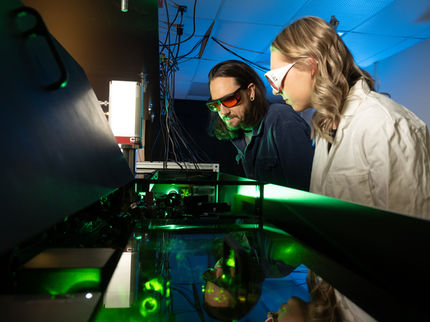New solar cells from the 3D printer
The future of energy generation?
In the future, solar energy could come out of a 3D printer by the meter: Researchers at Swansea University (Wales, United Kingdom) have succeeded in producing perovskite solar cells using 3D printing. In the future, this innovation could lead to flexible, cost-effective and efficient solar cells in film form that could be used in a wide variety of applications. Today or tomorrow: adhesive technology ensures that they can be easily and securely attached to a wide variety of surfaces.
Solar cells made from perovskite, a relatively common mineral, are seen as a promising alternative to conventional silicon solar cells. Researchers at Swansea University have now found a way to produce this type of solar cell using 3D printing. The decisive breakthrough for success was the identification of the right solvent mixture for coating. Previously, the first print layer had to be laboriously processed. The newly developed mixture dries as a film without dissolving the underlying layer, so that the layer can be applied continuously and compatibly with the underlying layers at high temperature and low speed during printing. To date, the research team has printed around 20 meters of the new type of film.
Looking to the future
The next step is to incorporate the material into solar panels and install it on buildings to prove the functionality of the innovation. And who knows: in the future, a fully functional perovskite solar film could be mass-produced quickly and economically and used in a variety of applications. From powering buildings to integration in vehicles and portable devices such as smartphones - the possibilities are endless.
The start has already been made
While ready-to-use solar films made from perovskite are still a dream of the future, films made from so-called organic solar cells are already available in series production. The Dresden-based company Heliatek, for example, has produced solar films covering an area of 5,000 square meters. At the same time, the company is working on gradually increasing production volumes. The ultra-light, flexible films, which are only a few millimetres thick, are still being supplied to industrial customers, but in future they will also be available for purchase by private customers.
Solar films and adhesives? A perfect match!
Whether perovskite solar cell films from the 3D printer of the future or already established and mass-produced films made from so-called organic solar cells - adhesives are used for quick and secure attachment to various surfaces. In addition to easy installation, bonding ensures a seamless and unobtrusive design as well as flexibility and adaptability, as the films can be easily bonded to glass, plastic or metal.
Previous developments in the field of solar films show that The future of solar energy looks very promising thanks to ever new innovations in this field - and adhesives are always involved.
Author: Industrieverband Klebstoffe e.V.
Note: This article has been translated using a computer system without human intervention. LUMITOS offers these automatic translations to present a wider range of current news. Since this article has been translated with automatic translation, it is possible that it contains errors in vocabulary, syntax or grammar. The original article in German can be found here.
Other news from the department business & finance

Get the chemical industry in your inbox
By submitting this form you agree that LUMITOS AG will send you the newsletter(s) selected above by email. Your data will not be passed on to third parties. Your data will be stored and processed in accordance with our data protection regulations. LUMITOS may contact you by email for the purpose of advertising or market and opinion surveys. You can revoke your consent at any time without giving reasons to LUMITOS AG, Ernst-Augustin-Str. 2, 12489 Berlin, Germany or by e-mail at revoke@lumitos.com with effect for the future. In addition, each email contains a link to unsubscribe from the corresponding newsletter.



























































